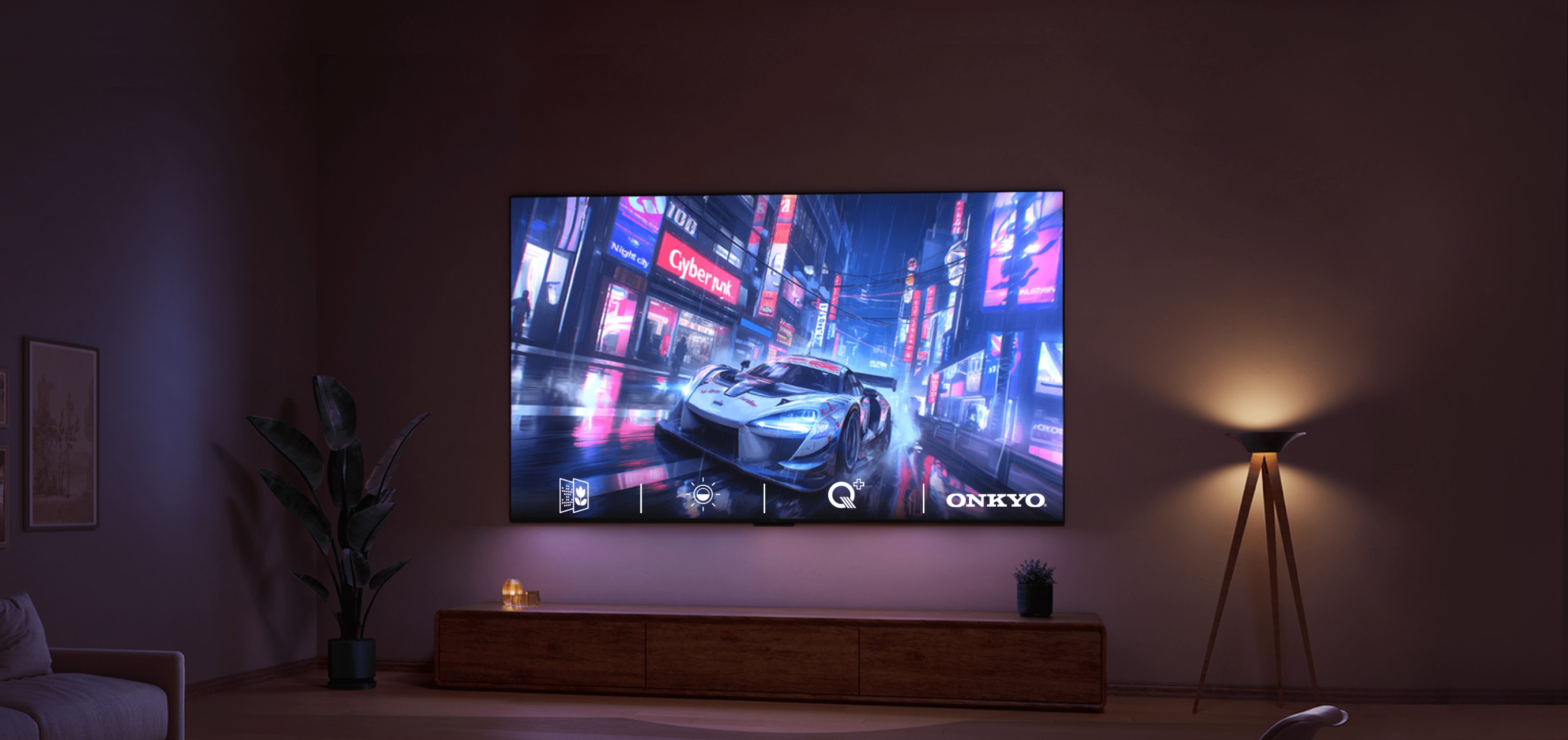Buying a new TV can be overwhelming with terms like "4K HDR" and "4K UHD" flooding the market. Understanding these technologies is crucial to make an informed purchase that meets your specific viewing needs. Both 4K HDR and 4K UHD offer groundbreaking advancements in picture quality, but they serve different purposes. This guide will break down the distinctions between the two, helping you decide which is right for you.
What is 4K UHD?
4K UHD, or 4K Ultra-High Definition, refers to a TV resolution of 3840 x 2160 pixels—four times the pixel count of Full HD (1920 x 1080 pixels). This substantial increase in pixel density results in sharper image clarity and finer details, making every frame appear crisp and clean.
The primary competency of 4K UHD lies in its ability to deliver clearer visuals, especially on large screens. If you’re upgrading to a TV for a larger living room, 4K UHD ensures tiny details are visible, enriching your media experience. The TCL P8K QLED TV redefines visual excellence with its UHD QLED display, delivering stunning 4K clarity enhanced by advanced color technologies. With an ultra-wide color gamut (93% DCI-P3) and Quantum Dot technology, it produces vibrant, true-to-life colors and remarkable detail. Its crystal-clear resolution ensures every frame appears sharp and immersive, especially on its expansive 98-inch screen—ideal for elevating your viewing experience to cinematic levels. Whether you're watching movies or playing games, the TCL P8K TV’s advanced 4K UHD technology takes visual quality to the next level.
What is 4K HDR?
4K HDR, or High Dynamic Range in 4K resolution, takes the visual experience to another level. While 4K UHD focuses on resolution, HDR enhances how colors, contrast, and brightness appear on screen. HDR delivers lifelike visuals by reproducing more vibrant colors, deeper contrasts, and bright highlights.
The major competencies of HDR are its ability to make dark scenes more detailed and bright visuals more realistic—perfect for watching cinematic movies, nature documentaries, or immersive TV shows.
These two features aren’t mutually exclusive. In fact, they come together beautifully in the TCL P6K 4K HDR TV. This innovative TV combines stunning 4K UHD resolution with HDR10 technology, delivering lifelike visuals characterized by exceptional brightness, vivid colors, and enhanced shadow details. Immerse yourself in unparalleled picture quality and elevate your viewing experience with the TCL P6K 4K HDR TV.
Difference Between 4K UHD and 4K HDR
Resolution vs. Contrast
The main difference between 4K UHD and 4K HDR lies in their focus. 4K UHD enhances resolution—more pixels result in sharper images—but does not inherently improve color or contrast. On the other hand, 4K HDR prioritizes color depth, contrast management, and brightness levels for a visually dynamic experience, even if both use the same resolution.
Color and Brightness
4K UHD displays standard colors suitable for most content, but 4K HDR widens the color gamut, reproducing hues closer to what we see in real life. HDR also adjusts brightness levels dynamically, ensuring even the smallest lighting changes are visible across bright and shadow-laden scenes.
Content Support
Most TVs support 4K UHD content, especially popular streaming platforms like Netflix, YouTube, and Blu-ray discs. However, not all 4K content is HDR-compatible. HDR content (HDR10, HDR10+, or Dolby Vision) is generally available for selected movies, shows, and gaming content optimized for lifelike visuals.
Brand and Build Quality
The brand and build quality also play a crucial role; reputable brands like TCL are known for their durability and long-lasting performance due to high manufacturing standards and quality materials.
How to Choose Between 4K UHD and 4K HDR
Based on the differences we've outlined above, you can make an informed choice:
Choose 4K UHD if You:
- Focus primarily on resolution upgrades.
- Consume standard 4K content like TV shows or sports.
- Want an improved visual experience without stretching your budget.
Choose 4K HDR if You:
- Watch HDR movies or nature documentaries.
- Play HDR-compatible games requiring detailed visuals.
- Desire premium image dynamics for a true-to-life experience.
Conclusion
The choice between 4K HDR and 4K UHD ultimately depends on your viewing preferences, but they aren’t mutually exclusive—they can coexist seamlessly. While 4K UHD delivers sharp resolution and incredible detail, 4K HDR takes it further by adding lifelike realism, stunning colors, and enhanced contrasts. Together, they create an unmatched visual experience.
Products like TCL P6K 4K HDR TV, TCL P7K QLED TV and TCL P8K QLED TV combine the best of both worlds, ensuring you enjoy content exactly as filmmakers intended. By selecting the right technology, you can maximize your investment and elevate your entertainment setup to new heights. Explore and discover the premium TCL TVs for your viewing needs!
Connect with us on Facebook, Instagram, Twitter & YouTube for the latest updates on our TCL Products and events.


